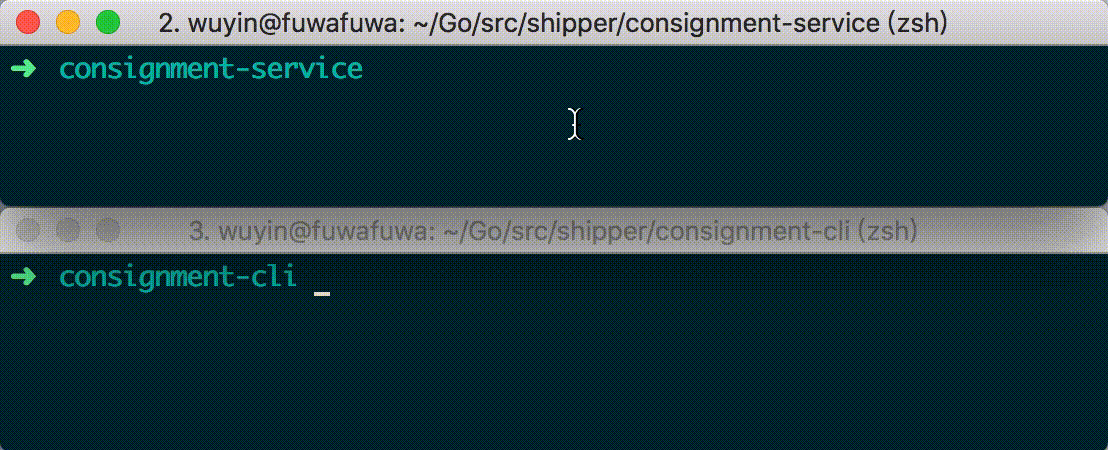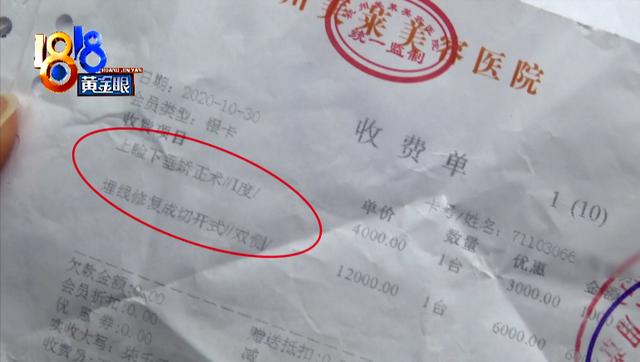字数统计: 4,073
原文链接:ewanvalentine.io,翻译已获作者 Ewan Valentine 授权。
本节对 gRPC 的使用浅尝辄止,更多可参考:gRPC 中 Client 与 server 数据交互的 4 种模式
前言
系列概览
《Golang 微服务教程》分为 10 篇,总结微服务开发、测试到部署的完整过程。
本节先介绍微服务的基础概念、术语,再创建我们的第一个微服务 consignment-service 的简洁版。在接下来的第 2~10 节文章中,我们会陆续创建以下微服务:
- consignment-service(货运服务)
- inventory-service(仓库服务)
- user-service(用户服务)
- authentication-service(认证服务)
- role-service (角色服务)
- vessel-service(货船服务)
用到的完整技术栈如下:
Golang, gRPC, go-micro // 开发语言及其 RPC 框架 Google Cloud, MongoDB // 云平台与数据存储 Docker, Kubernetes, Terrafrom // 容器化与集群架构 NATS, CircleCI // 消息系统与持续集成
代码仓库
作者代码:EwanValentine/shippy,译者的中文注释代码: wuYin/shippy
每个章节对应仓库的一个分支,比如本文part1 的代码在 feature/part1
开发环境
笔者的开发环境为 macOS,本文中使用了 make 工具来高效编译,Windows 用户需 手动安装
$ go env GOARCH="amd64" # macOS 环境 GOOS="darwin" # 在第二节使用 Docker 构建 alpine 镜像时需修改为 linux GOPATH="/Users/wuyin/Go" GOROOT="/usr/local/go"
准备
掌握 Golang 的基础语法:推荐阅读谢大的《Go Web 编程》
安装 gRPC / protobuf
go get -u google.golang.org/grpc # 安装 gRPC 框架 go get -u github.com/golang/protobuf/protoc-gen-go # 安装 Go 版本的 protobuf 编译器
微服务
按照特征做拆分:如 MVC 模式
不管怎么拆分,最终二者的代码都会集中在一个库中进行开发和管理,可参考:谷歌的单一代码库管理
微服务是上述第二种拆分方式的拓展,按功能将代码拆分成几个包,都是可独立运行的单一代码库。区别如下:

微服务有哪些优势?
降低复杂性
将整个应用的代码按功能对应拆分为小且独立的微服务代码库,这不禁让人联想到 Unix 哲学:Do One Thing and Do It Well,在传统单一代码库的应用中,模块之间是紧耦合且边界模糊的,随着产品不断迭代,代码的开发和维护将变得更为复杂,潜在的 bug 和漏洞也会越来越多。
提高扩展性
在项目开发中,可能有一部分代码会在多个模块中频繁的被用到,这种复用性很高的模块常常会抽离出来作为公共代码库使用,比如验证模块,当它要扩展功能(添加短信验证码登录等)时,单一代码库的规模只增不减, 整个应用还需重新部署。在微服务架构中,验证模块可作为单个服务独立出来,能独立运行、测试和部署。
遵循微服务拆分代码的理念,能大大降低模块间的耦合性,横向扩展也会容易许多,正适合当下云计算的高性能、高可用和分布式的开发环境。
Nginx 有一系列文章来探讨微服务的许多概念,可 点此阅读
使用 Golang 的好处?
微服务是一种架构理念而不是具体的框架项目,许多编程语言都可以实现,但有的语言对微服务开发具备天生的优势,Golang 便是其中之一
Golang 本身十分轻量级,运行效率极高,同时对并发编程有着原生的支持,从而能更好的利用多核处理器。内置 net 标准库对网络开发的支持也十分完善。可参考谢大的短文:Go 语言的优势
此外,Golang 社区有一个很棒的开源微服务框架 go-mirco,我们在下一节会用到。
Protobuf 与 gRPC
在传统应用的单一代码库中,各模块间可直接相互调用函数。但在微服务架构中,由于每个服务对应的代码库是独立运行的,无法直接调用,彼此间的通信就是个大问题,解决方案有 2 个:
JSON 或 XML 协议的 API
微服务之间可使用基于 HTTP 的 JSON 或 XML 协议进行通信:服务 A 与服务 B 进行通信前,A 必须把要传递的数据 encode 成 JSON / XML 格式,再以字符串的形式传递给 B,B 接收到数据需要 decode 后才能在代码中使用:
- 优点:数据易读,使用便捷,是与浏览器交互必选的协议
- 缺点:在数据量大的情况下 encode、decode 的开销随之变大,多余的字段信息导致传输成本更高
RPC 协议的 API
下边的 JSON 数据就使用 description、weight 等元数据来描述数据本身的意义,在 Browser / Server 架构中用得很多,以方便浏览器解析:
{ "description": "This is a test consignment", "weight": 550, "containers": [ { "customer_id": "cust001", "user_id": "user001", "origin": "Manchester, United Kingdom" } ], "vessel_id": "vessel001" }
但在两个微服务之间通信时,若彼此约定好传输数据的格式,可直接使用二进制数据流进行通信,不再需要笨重冗余的元数据。
gRPC 简介
gRPC 是谷歌开源的轻量级 RPC 通信框架,其中的通信协议基于二进制数据流,使得 gRPC 具有优异的性能。
gRPC 支持 HTTP 2.0 协议,使用二进制帧进行数据传输,还可以为通信双方建立持续的双向数据流。可参考:Google HTTP/2 简介
protobuf 作为通信协议
两个微服务之间通过基于 HTTP 2.0 二进制数据帧通信,那么如何约定二进制数据的格式呢?答案是使用 gRPC 内置的 protobuf 协议,其 DSL 语法 可清晰定义服务间通信的数据结构。可参考:gRPC Go: Beyond the basics
consignment-service 微服务开发
经过上边必要的概念解释,现在让我们开始开发我们的第一个微服务:consignment-service
项目结构
假设本项目名为 shippy,你需要:
- 在 $GOPATH 的 src 目录下新建 shippy 项目目录
- 在项目目录下新建文件 consignment-service/proto/consignment/consignment.proto
为便于教学,我会把本项目的所有微服务的代码统一放在 shippy 目录下,这种项目结构被称为 “mono-repo”,读者也可以按照 “multi-repo” 将各个微服务拆为独立的项目。更多参考 REPO 风格之争:MONO VS MULTI
现在你的项目结构应该如下:
$GOPATH/src └── shippy └── consignment-service └── proto └── consignment └── consignment.proto
开发流程

定义 protobuf 通信协议文件
// shipper/consignment-service/proto/consignment/consignment.proto syntax = "proto3"; package go.micro.srv.consignment; // 货轮微服务 service ShippingService { // 托运一批货物 rpc CreateConsignment (Consignment) returns (Response) { } } // 货轮承运的一批货物 message Consignment { string id = 1; // 货物编号 string description = 2; // 货物描述 int32 weight = 3; // 货物重量 repeated Container containers = 4; // 这批货有哪些集装箱 string vessel_id = 5; // 承运的货轮 } // 单个集装箱 message Container { string id = 1; // 集装箱编号 string customer_id = 2; // 集装箱所属客户的编号 string origin = 3; // 出发地 string user_id = 4; // 集装箱所属用户的编号 } // 托运结果 message Response { bool created = 1; // 托运成功 Consignment consignment = 2;// 新托运的货物 }
语法参考: Protobuf doc

生成协议代码
protoc 编译器使用 grpc 插件编译 .proto 文件
为避免重复的在终端执行编译、运行命令,本项目使用 make 工具,新建 consignment-service/Makefile
1 2 3 4 build: # 一定要注意 Makefile 中的缩进,否则 make build 可能报错 Nothing to be done for build # protoc 命令前边是一个 Tab,不是四个或八个空格 protoc -I. --go_out=plugins=grpc:$(GOPATH)/src/shippy/consignment-service/proto/consignment/consignment.proto
执行 make build,会在 proto/consignment 目录下生成 consignment.pb.go
consignment.proto 与 consignment.pb.go 的对应关系
service:定义了微服务 ShippingService 要暴露为外界调用的函数:CreateConsignment,由 protobuf 编译器的 grpc 插件处理后生成 interface
type ShippingServiceClient interface { // 托运一批货物 CreateConsignment(ctx context.Context, in *Consignment, opts ...grpc.CallOption) (*Response, error) }
message:定义了通信的数据格式,由 protobuf 编译器处理后生成 struct
type Consignment struct { Id string `protobuf:"bytes,1,opt,name=id" json:"id,omitempty"` Description string `protobuf:"bytes,2,opt,name=description" json:"description,omitempty"` Weight int32 `protobuf:"varint,3,opt,name=weight" json:"weight,omitempty"` Containers []*Container `protobuf:"bytes,4,rep,name=containers" json:"containers,omitempty"` // ... }
实现服务端
服务端需实现 ShippingServiceClient 接口,创建consignment-service/main.go
package main import ( // 导如 protoc 自动生成的包 pb "shippy/consignment-service/proto/consignment" "context" "net" "log" "google.golang.org/grpc" ) const ( PORT = ":50051" ) // // 仓库接口 // type IRepository interface { Create(consignment *pb.Consignment) (*pb.Consignment, error) // 存放新货物 } // // 我们存放多批货物的仓库,实现了 IRepository 接口 // type Repository struct { consignments []*pb.Consignment } func (repo *Repository) Create(consignment *pb.Consignment) (*pb.Consignment, error) { repo.consignments = append(repo.consignments, consignment) return consignment, nil } func (repo *Repository) GetAll() []*pb.Consignment { return repo.consignments } // // 定义微服务 // type service struct { repo Repository } // // service 实现 consignment.pb.go 中的 ShippingServiceServer 接口 // 使 service 作为 gRPC 的服务端 // // 托运新的货物 func (s *service) CreateConsignment(ctx context.Context, req *pb.Consignment) (*pb.Response, error) { // 接收承运的货物 consignment, err := s.repo.Create(req) if err != nil { return nil, err } resp := &pb.Response{Created: true, Consignment: consignment} return resp, nil } func main() { listener, err := net.Listen("tcp", PORT) if err != nil { log.Fatalf("failed to listen: %v", err) } log.Printf("listen on: %s\n", PORT) server := grpc.NewServer() repo := Repository{} // 向 rRPC 服务器注册微服务 // 此时会把我们自己实现的微服务 service 与协议中的 ShippingServiceServer 绑定 pb.RegisterShippingServiceServer(server, &service{repo}) if err := server.Serve(listener); err != nil { log.Fatalf("failed to serve: %v", err) } }
上边的代码实现了 consignment-service 微服务所需要的方法,并建立了一个 gRPC 服务器监听 50051 端口。如果你此时运行 go run main.go,将成功启动服务端:

实现客户端
我们将要托运的货物信息放到 consignment-cli/consignment.json:
{ "description": "This is a test consignment", "weight": 550, "containers": [ { "customer_id": "cust001", "user_id": "user001", "origin": "Manchester, United Kingdom" } ], "vessel_id": "vessel001" }
客户端会读取这个 JSON 文件并将该货物托运。在项目目录下新建文件:consingment-cli/cli.go
package main import ( pb "shippy/consignment-service/proto/consignment" "io/ioutil" "encoding/json" "errors" "google.golang.org/grpc" "log" "os" "context" ) const ( ADDRESS = "localhost:50051" DEFAULT_INFO_FILE = "consignment.json" ) // 读取 consignment.json 中记录的货物信息 func parseFile(fileName string) (*pb.Consignment, error) { data, err := ioutil.ReadFile(fileName) if err != nil { return nil, err } var consignment *pb.Consignment err = json.Unmarshal(data, &consignment) if err != nil { return nil, errors.New("consignment.json file content error") } return consignment, nil } func main() { // 连接到 gRPC 服务器 conn, err := grpc.Dial(ADDRESS, grpc.WithInsecure()) if err != nil { log.Fatalf("connect error: %v", err) } defer conn.Close() // 初始化 gRPC 客户端 client := pb.NewShippingServiceClient(conn) // 在命令行中指定新的货物信息 json 文件 infoFile := DEFAULT_INFO_FILE if len(os.Args) > 1 { infoFile = os.Args[1] } // 解析货物信息 consignment, err := parseFile(infoFile) if err != nil { log.Fatalf("parse info file error: %v", err) } // 调用 RPC // 将货物存储到我们自己的仓库里 resp, err := client.CreateConsignment(context.Background(), consignment) if err != nil { log.Fatalf("create consignment error: %v", err) } // 新货物是否托运成功 log.Printf("created: %t", resp.Created) }
运行 go run main.go 后再运行 go run cli.go:

我们可以新增一个 RPC 查看所有被托运的货物,加入一个GetConsignments方法,这样,我们就能看到所有存在的consignment了:
// shipper/consignment-service/proto/consignment/consignment.proto syntax = "proto3"; package go.micro.srv.consignment; // 货轮微服务 service ShippingService { // 托运一批货物 rpc CreateConsignment (Consignment) returns (Response) { } // 查看托运货物的信息 rpc GetConsignments (GetRequest) returns (Response) { } } // 货轮承运的一批货物 message Consignment { string id = 1; // 货物编号 string description = 2; // 货物描述 int32 weight = 3; // 货物重量 repeated Container containers = 4; // 这批货有哪些集装箱 string vessel_id = 5; // 承运的货轮 } // 单个集装箱 message Container { string id = 1; // 集装箱编号 string customer_id = 2; // 集装箱所属客户的编号 string origin = 3; // 出发地 string user_id = 4; // 集装箱所属用户的编号 } // 托运结果 message Response { bool created = 1; // 托运成功 Consignment consignment = 2; // 新托运的货物 repeated Consignment consignments = 3; // 目前所有托运的货物 } // 查看货物信息的请求 // 客户端想要从服务端请求数据,必须有请求格式,哪怕为空 message GetRequest { }
现在运行make build来获得最新编译后的微服务界面。如果此时你运行go run main.go,你会获得一个类似这样的错误信息:

熟悉Go的你肯定知道,你忘记实现一个interface所需要的方法了。让我们更新consignment-service/main.go:
package main import ( pb "shippy/consignment-service/proto/consignment" "context" "net" "log" "google.golang.org/grpc" ) const ( PORT = ":50051" ) // // 仓库接口 // type IRepository interface { Create(consignment *pb.Consignment) (*pb.Consignment, error) // 存放新货物 GetAll() []*pb.Consignment // 获取仓库中所有的货物 } // // 我们存放多批货物的仓库,实现了 IRepository 接口 // type Repository struct { consignments []*pb.Consignment } func (repo *Repository) Create(consignment *pb.Consignment) (*pb.Consignment, error) { repo.consignments = append(repo.consignments, consignment) return consignment, nil } func (repo *Repository) GetAll() []*pb.Consignment { return repo.consignments } // // 定义微服务 // type service struct { repo Repository } // // 实现 consignment.pb.go 中的 ShippingServiceServer 接口 // 使 service 作为 gRPC 的服务端 // // 托运新的货物 func (s *service) CreateConsignment(ctx context.Context, req *pb.Consignment) (*pb.Response, error) { // 接收承运的货物 consignment, err := s.repo.Create(req) if err != nil { return nil, err } resp := &pb.Response{Created: true, Consignment: consignment} return resp, nil } // 获取目前所有托运的货物 func (s *service) GetConsignments(ctx context.Context, req *pb.GetRequest) (*pb.Response, error) { allConsignments := s.repo.GetAll() resp := &pb.Response{Consignments: allConsignments} return resp, nil } func main() { listener, err := net.Listen("tcp", PORT) if err != nil { log.Fatalf("failed to listen: %v", err) } log.Printf("listen on: %s\n", PORT) server := grpc.NewServer() repo := Repository{} pb.RegisterShippingServiceServer(server, &service{repo}) if err := server.Serve(listener); err != nil { log.Fatalf("failed to serve: %v", err) } }
如果现在使用go run main.go,一切应该正常:

最后让我们更新consignment-cli/cli.go来获得consignment信息:
func main() { ... // 列出目前所有托运的货物 resp, err = client.GetConsignments(context.Background(), &pb.GetRequest{}) if err != nil { log.Fatalf("failed to list consignments: %v", err) } for _, c := range resp.Consignments { log.Printf("% v", c) } }
此时再运行go run cli.go,你应该能看到所创建的所有consignment,多次运行将看到多个货物被托运:

至此,我们使用protobuf和grpc创建了一个微服务以及一个客户端。
在下一篇文章中,我们将介绍使用go-micro框架,以及创建我们的第二个微服务。同时在下一篇文章中,我们将介绍如何容Docker来容器化我们的微服务。
,




